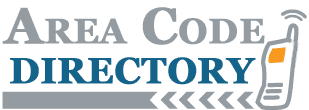About California Area Code 424
The 424 area code includes California cities Agoura Hills, Avalon (Santa Catalina Island), Beverly Hills, Brentwood, Carson, Compton, Culver City, Dominguez Hills, El Segundo, Gardena, Hawthorne, Hermosa Beach, Inglewood, LAX Airport, Lennox, Lomita, Long Beach, Lynwood, Malibu, Manhattan Beach, Marina Del Rey, Pacific Palisades, Playa Del Rey, Rancho Palos Verdes, Redondo Beach, Santa Monica, San Pedro, Topanga, Torrance, UCLA (including UCLA Medical Center), Venice, West Hollywood, West L.A., Westlake Village; southwestern L.A. County.Nearby area codes are 213, 310, 323, 562, 626, 657, 714, 805 and 818.
Search for a phone number:
Extended information
North American telephone area codes 310 and 424 are the California telephone area code which are roughly coterminous with the West Los Angeles and South Bay areas of Los Angeles County, including offshore Catalina Island, located 40 km (26 mi.) south of the mainland portion of Los Angeles County. It also includes a small portion of Ventura County. Area code 310 was split from Area code 213 on November 2, 1991; The 424 area code overlay of 310 became effective on July 26, 2006. Area code 213, which at its inception covered all of Southern California, is now reserved exclusively for the area of Downtown Los Angeles.Area code 424 is the first non-mobile area code overlay in Southern California. Because of this, dialers in the 310 area code are no longer able to dial a 7-digit number even if they are dialing another phone number in the same area code. Until the overlay of area codes 657 and 714 became active in 2008, the 310-424 complex was the only area code overlay in the entire state of California, despite California having more area codes than any other state.
"The 310" is often used as shorthand for the West Side of Los Angeles and the South Bay region south of LAX. Unlike Manhattan's 646 overlay, when 310 was introduced it immediately became more desirable than the older 213 because of its connection with the affluence of Beverly Hills, Malibu, Santa Monica, and other parts of West Los Angeles.
The south and east portions of 310 (roughly the Gateway Cities area of Los Angeles County from Long Beach to Whittier) became the 562 area code on January 25, 1997.
In lieu of executing an additional split, a new area code 424 overlay for the entire 310 region was first announced in early 1999. Previously, several proposals had been made to split 310 at Imperial Highway, a major east-west thoroughfare that marks the southern boundary of Los Angeles International Airport. The South Bay, below the boundary, would have received area code 424. South Bay governments and businesses opposed such a move, since it would require costly changes to business cards, stationery, signage, and other business communications.
The announcement of the 424 overlay created an uproar in Los Angeles's politically powerful Westside community, in part because the change would necessitate dialing 10 digits even when calling local numbers. Championed by Los Angeles Times columnist Robert Scheer in the paper's Santa Monica insert section, a protest movement arose in May 1999, focusing on the idea of telephone-number conservation. In a carry-over from the analog phone-system days, numbers were still being distributed to telephone companies in blocks of 10,000 -- leading to a huge volume of unused telephone numbers in each area code. Responding to the controversy, the California Assembly passed the Consumer Area Code Relief Act of 1999 on September 9, 1999, and the 424 overlay was tabled.
Having been staved off nearly seven years, the 424 overlay was finally implemented on July 26, 2006 and new telephone numbers issued in the 310 area code may now begin with either 310 or 424. Ten-digit dialing within the 310 area code became optional on January 1, 2006 and mandatory on July 26, 2006.
